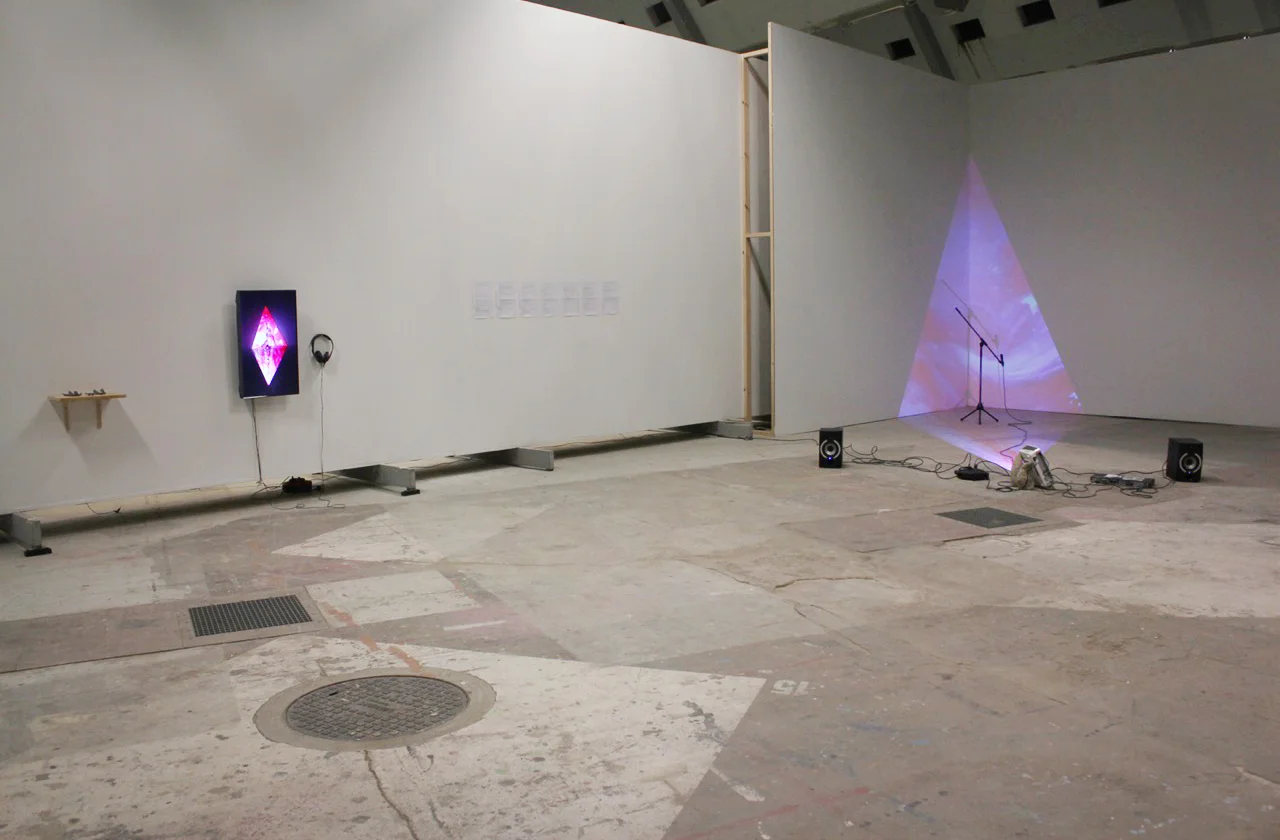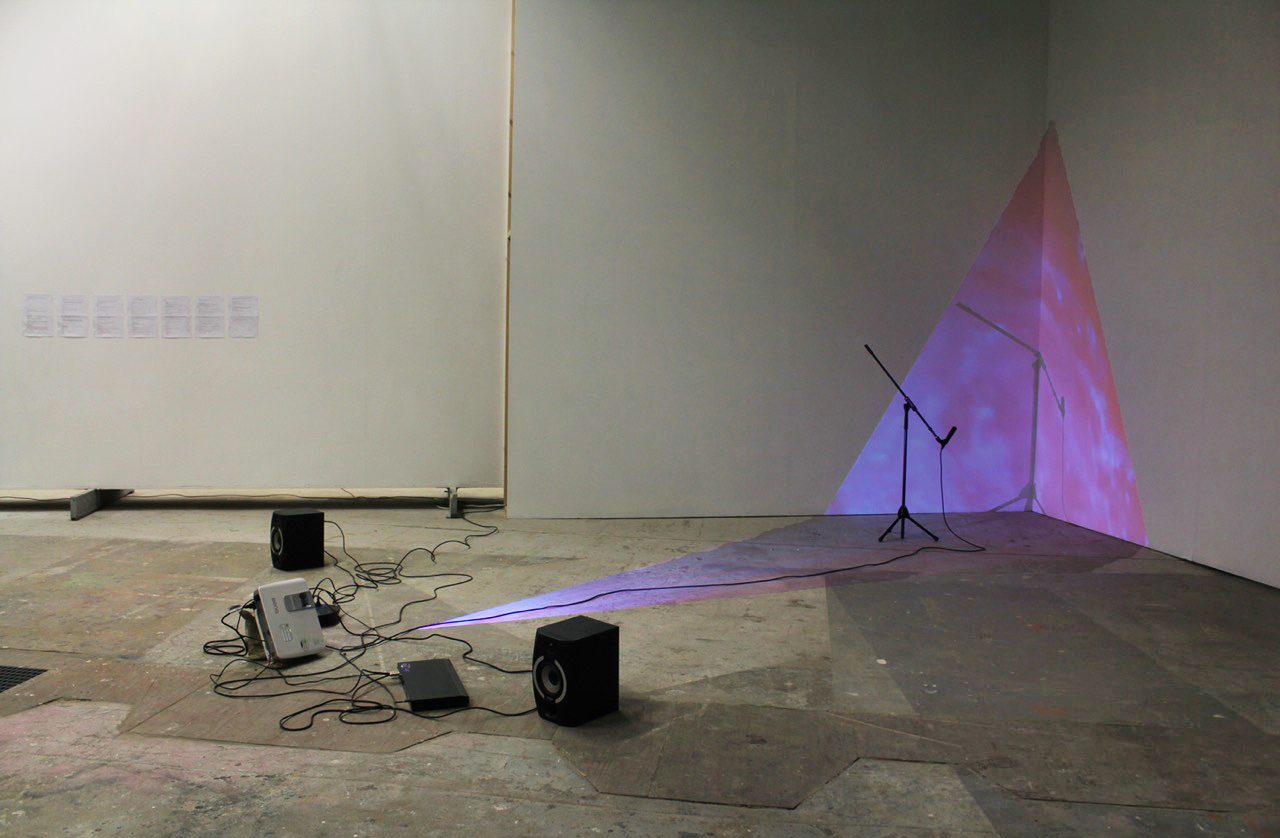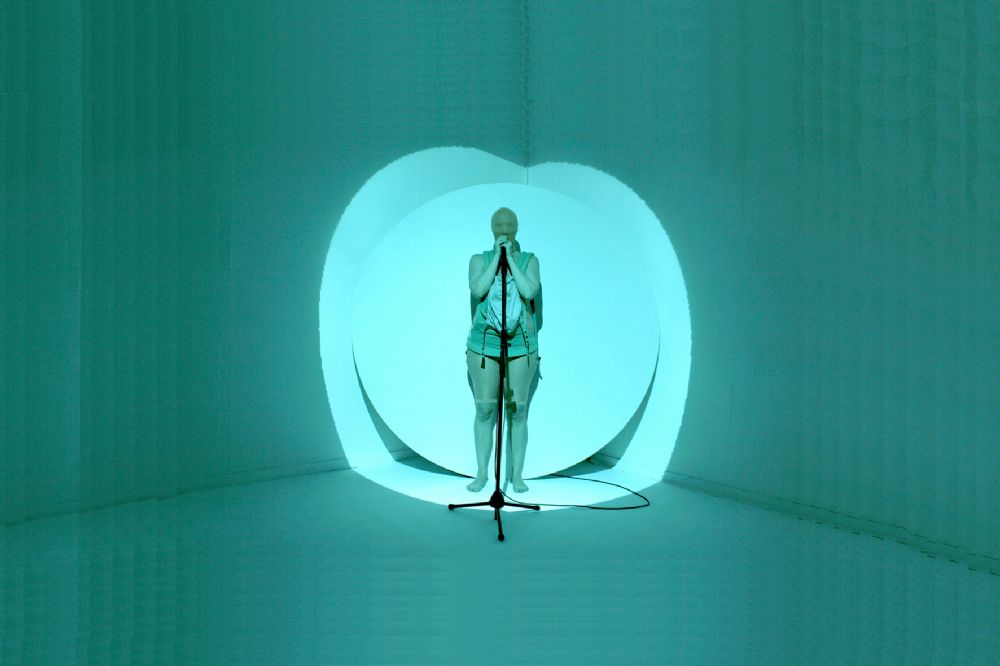TO BE ONE IS ALWAYS TO BECOME WITH MANY

Last November, Danish artist Nanna Lysholt Hansen asked me to contribute with an essay for Curatron C/o to accompany her most recent performance at Fabrikken for Kunst og Design in Copenhagen. We organized to sit over a coffee at her Vesterbro studio and exhibition space (NLH Space) to talk about the performance, and as usual our conversation drifted.
My hand scribbled notes recall a disparate discussion, which felt like a nice starting point to thinking about Nanna’s practice. Just like my wandering notes, Nanna’s subsequent performance, Dear Daughter/Anatomy of the Chthulucene (O’Connell Oh Oh Haraway) intertwined discursive relations such as the body, voice and technology with literature and her memories.
The title of this essay is adapted from a text written by Donna Haraway in the introduction to her book When Species Meet. The text proposes a way of living through what Haraway describes, as a myriad of unfinished configurations of places, times, matters and meanings. The practice of becoming with unfolds throughout Haraway’s writing through her interpretations of sym-poietic systems or making-with rather than auto-poietic systems or self-making.
Haraway’s experience as a biologist is central: sym-poietic arrangements, otherwise known as cells, organisms and ecological assemblages are the framework for her ontology. The dynamic patterns of these collectively producing systems are a template to a practice of overcoming individuality, as a way of being in and caring for a multispecies world.
Nanna Lysholt Hansen, Dear Daughter/Anatomy of the Chthulucene (O’Connell Oh Oh Haraway), 2016, 20 minutes live performance.
Dear Daughter is a series of three performative speech installations by artist Nanna Lysholt Hansen that embody Haraway’s thinking in an evolving declaration of becoming-with in an increasingly tangled biological and technological network. Speaking from the viewpoint of poignant personal experiences, Lysholt Hansen recalls her ongoing memories of becoming a mother, intertwined with fragments of texts that weave a complex assemblage of historical, feminist and technological narratives. To navigate a coming together of texts and personal experience, Lysholt Hansen’s practice is experimental and linguistic. She proposes worlds in the interstices and intersections of words. Drawing from texts such as Donna Haraway’s Cyborg Manifesto (1985), and the work of Rosi Braidotti and Sadie Plant, the artist tears, modifies and collages to create a kind a speech to ‘prepare her child for a political-technological future’.
At this point I think it’s important to introduce Haraway’s conceptualization of the Chthulucene - a term coined by the writer to describe our current epoch, where human and nonhuman are inextricably linked in tentacular practices. In this way, the Chthulucene is a becoming with of organic and abiotic assemblages.
The epistemology of the Chthulu seeks an alternative to the cynicism, defeatism and apocalyptic panics of Anthropocene and Capitalocene discourse, voicing multispecies narratives of human and machine, biological and mechanical. It is here, in the potential of the Chthulu, that Lysholt Hansen’s most recent performance Dear Daughter/Anatomy of the Chthulucence takes its starting point.
Dear Daughter/Anatomy of the Chthulucence is a speech performed using audio playback technology that weaves together Donna Haraway’s concept of ‘the Chthulucene’ with anatomic descriptions of the clitoris by female anatomist Helen O’Connell. The artist’s speech proposes a notion of kin as more than an entity tied by genealogy, where the sharing and division that define our being-in-common are no longer conceived in ancestral ways.
Interestingly, Lysholt Hansen’s method of translation in her performance creates a mode of relationship to the source texts that is mutual, pleasurable and respectful. Equated with more maternal principles, the artist draws links between the mothers of the text in the past (Haraway and O’Connell), embodiment of the text in the present (Nanna) and future carrier of the text (Daughter). The mechanical speech, whose functionality deals with the nature of dialogue, translates the artist’s fragmented texts to reveal notions of becoming-with of mother and daughter, individual and collective, human and nonhuman.
Nanna Lysholt Hansen, Dear Daughter/Anatomy of the Chthulucene (O’Connell Oh Oh Haraway), 2016, 21’50’’ HD video with sound, installation view: Curatron C/o The Factory of Art & Design, Copenhagen, December 2016 (Photo: Nanna Lysholt Hansen).
When one watches (or listens) to the performance, one is at first aware of a person sharing a conversation with her daughter and the memories they themselves have lived. In fact, what is interesting about Lysholt Hansen’s translations of literary texts is her explicit rewriting of material from third person to first person. Thus, constructing personal meanings and experiences, the performance is charged with a special affection of caring for the maturing process of the source texts and giving them new life. But to whom does this text belong?
The artist’s body is concealed. It is seemingly unable to speak, unable to return the gaze of the audience. The body becomes a cyborg and the speech becomes detached from the body, disembodied so to speak. Comparable to collectively producing patterns that underpin Haraway’s ontology, Dear Daughter/Anatomy of the Chthulucence manifests a becoming with, by which the voices of the past, present and future, human and nonhuman, individual and the collective are all constituted.
Callum Ross (f. 1990) er en australsk kurator med base i København. I øjeblikket arbejder han som udstillingsassistent i Den Frie Udstillingsbygning, København. Callum har bidraget til idoart.dk siden 2017.













